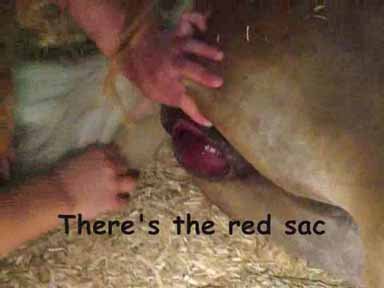What is Red Bag ? How to treat Red bag delivery in Mare

What is Red Bag ? How to treat Red bag delivery in Mare, Red bag is the premature separation of the placenta prior to or during a mare’s foaling. Fortunately, it is an infrequent occurrence in healthy foaling mares.
Parts of Mare placenta:
equine placenta is made up of two major parts: the red bag or chorioallantois, and the white bag or amnion. The red bag attaches to the uterine wall and allows the exchange of nutrients and waste back and forth to the fetus through the umbilical cord. The white bag surrounds the fetus and has many functions, including lubrication and protection. During a normal foaling, the red bag breaks just prior to the foal entering the birth canal. Thus, the first portion of the placenta you see in a normal foaling is the amnion, or white bag, followed promptly by the fetus it contains.
How to Treat Red bag delivery in Mare :
In a normal delivery, the red bag is generally passed by the mare within three hours after foaling. When the red bag appears before the white bag, it means that a portion of the placenta has detached from the uterine wall prematurely, reducing or eliminating the exchange of nutrients to the fetus still inside the mare. In this situation, the red bag appears as a red “velvety” bag hanging from the vulva. When the foaling attendant confirms the presence of the red bag instead of the white bag. He/she should carefully open this bag with surgical scissors—inside will be the white bag enclosing the fetus. Check for two legs and the nose; tear open the white bag and deliver the fetus promptly as it may be short on oxygen due to the early placental separation. The foal should be watched carefully for signs of hypoxia (oxygen deprivation) or infection.
Why Red bag deliveries occur?
The normal chorioallantois is relatively thin and breaks easily during birthing. However some placentas are thickened from infection or inflammation, a condition called “placentitis,” and can result in red bag deliveries.
